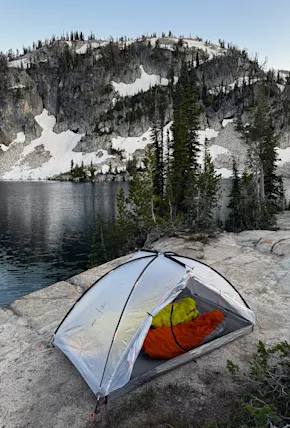Backpackers from the Pacific Northwest will feel right at home here thanks to frequent rain and overcast skies. But the less-than-stellar weather conditions are more than worth bearing with to spend time in this otherworldly landscape for a few days. I’ve never visited a place where you’ll find all the colors of the rainbow on the ground in a single area, then hike through a monochromatic volcanic plain the next. Every day on the Laugavegur Trail is different, offering an approachable way to get off the well-traveled Ring Road and see a more wild Iceland for yourself.
Along the way, you’ll meet a global community of trekkers, thanks to a system of huts where you can stay each night. The huts offer a way to slow down and connect throughout the trip over a beer. Start a conversation and you’re sure to pick up a few new route recommendations from all around the world. The Laugavegur doesn’t offer the seclusion and the quiet of remote backcountry missions, but it offers everything else in spades, making it a trip that should rise to the top of your list.
Trail Information
The Laugavegur Trek is 34 miles long, stretching from the trailhead in the Landmannalaugar Nature Reserve in the north to Thorsmork in the south, with a total elevation gain of roughly 5,500 feet. The path is clearly marked throughout and supported by a system of mountain huts where you can stay the night.
Hikers typically take four days to complete the route. Experienced backpackers could easily do it in less, but why would you? This route is best taken slowly, meandering onto side trails, soaking up the views (and, inevitably, the rain), which include rhyolite mountains, green valleys, lava fields, black sand deserts, and more.
Trail Sections
Landmannalaugar to Hrafntinnusker — 12 kilometers (~7.5 miles), 1,500 feet of elevation gain
Hrafntinnusker to Álftavatn — 12 kilometers (~7.5 miles), 900 feet of elevation gain
Álftavatn to Emstrur-Botnar Hut — 16 kilometers (~9.9 miles), 1,380 feet of elevation gain
Emstrur-Botnar Hut to Thorsmork — 15 kilometers (~9.3 miles), 1,450 feet of elevation gain


























